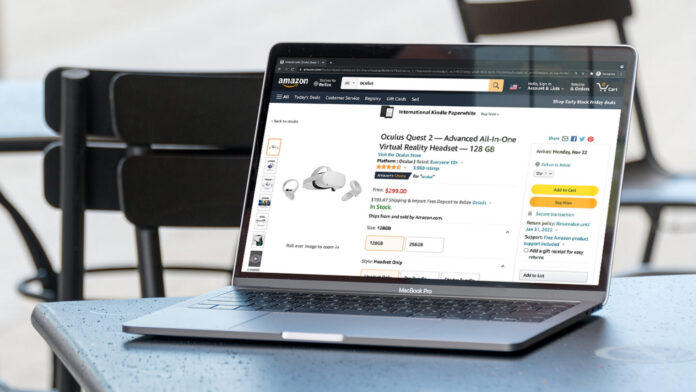As an online seller on Amazon, your product descriptions play a vital role in converting visitors into customers. It’s about more than just listing optimization on amazon the features of your products. Your descriptions must highlight the benefits and address your target audience’s needs and pain points. With the right approach and mindset, your Amazon product descriptions by amazon listing optimization software can become powerful for driving conversions and growing your business.
This article will discuss the best practices for crafting Amazon product descriptions that convert.
The Role of Product Descriptions in Amazon Conversions

Product descriptions on Amazon serve as a bridge between your products and potential customers. They provide essential information about your amazon product listing optimization agency, such as their features, benefits, and specifications. When crafted correctly, product descriptions can help potential customers make informed purchase decisions and increase the likelihood of converting visitors into buyers.
Best Practices for Formatting Amazon Product Descriptions
To create an effective product description, you must follow certain formatting guidelines. First, break your descriptions into short paragraphs, each focusing on a particular feature or benefit. Use bullet points to highlight the key points and make your descriptions scannable. Include high-quality images and videos to supplement your descriptions and provide a better understanding of your products.
Incorporating Benefit-Focused Language in Amazon Product Descriptions
One of the most critical aspects of crafting an effective Amazon product description is using benefit-focused language. Instead of just listing optimization amazon features, focus on your product’s benefits. For example, instead of saying, “This laptop has a 512GB SSD,” say, “Experience lightning-fast boot times and blazing-fast performance with a 512GB SSD.” You’re telling potential customers how your products can improve their lives by highlighting the benefits.
Crafting Descriptions That Address Customer Pain Points and Needs
Your product descriptions must address your target audience’s pain points and needs. Identify your customers’ challenges and show them how your products can solve them. For example, if you’re selling a backpack, mention the durability and comfort of the straps, the multiple pockets for organization, and the water-resistant material for protection from the elements. By highlighting these features, you’re addressing your target audience’s pain points and needs.
Using Emotional Triggers to Increase Amazon Conversions

Emotional triggers are a powerful amazon listing optimization tool for increasing Amazon conversions. Use words that evoke emotions such as excitement, happiness, and satisfaction. For example, instead of saying, “This coffee maker makes great coffee,” say, “Start your day with a delicious cup of coffee brewed to perfection.” By using emotional triggers, you’re tapping into the desires and aspirations of your target audience.
Understanding Amazon’s Character Limits for Product Descriptions
Amazon has character limits for product descriptions, and understanding them is essential to create effective descriptions. The character limit for the product title is 200 characters, and for the product description, it’s 2000 characters. Use these limits wisely and focus on the most critical information. Use short, catchy phrases in your titles and descriptive language in your descriptions.
Writing Amazon Descriptions for Mobile Users: Tips for Mobile Optimization
With the increasing use of mobile devices for online shopping, optimizing your Amazon product descriptions for mobile users is essential. Keep your descriptions short and scannable, with short paragraphs and bullet points. Use high-quality images and videos that load quickly on mobile devices. Also, ensure your descriptions are easily read on small screens using larger fonts and avoiding long sentences.
A/B Testing Amazon Product Descriptions for Improved Performance

A/B testing can be a game-changer when optimizing your Amazon product descriptions. By testing various versions of your descriptions, you can determine which ones are most effective at converting visitors into customers. Experiment with headlines, descriptions, and images to identify which generate the best amazon listing optimization service.
Once you have gathered data from your A/B tests, use it to refine your product descriptions and improve their performance. This will help you make informed decisions about the changes that need to be made to your amazon product listing optimization. The more you test, the more insights you will gain about your customers’ preferences and pain points.
When conducting A/B tests, it’s important to test only one variable at a time to get accurate results. For example, if you’re testing two different headlines, ensure the rest of the description remains the same. This will help you identify which element is responsible for the change in performance.
By leveraging A/B testing, you can continually improve your Amazon product descriptions and ultimately increase your sales. It’s a simple but effective way to refine your approach and optimize your listings for maximum impact.
Avoiding Common Mistakes in Amazon Product Descriptions

While crafting effective Amazon product descriptions is crucial, it’s equally important to avoid common mistakes that can negatively impact your conversion rates. Here are some common mistakes to avoid recommended by amazon product listing optimization company:
- Focusing Too Much on Features: It’s easy to get caught up in listing all the features of your product, but this approach can be ineffective. Instead, please focus on your product’s benefits and how it solves the customer’s pain points.
- Not Including High-Quality Images: High-quality images can significantly impact conversion rates. Ensure your product images are clear and attractive, and show the product from different angles.
- Ignoring Customer Reviews: Customer reviews provide valuable insights into what customers like and dislike about your products. Use these reviews to identify and address pain points in your product descriptions.
- Using Technical Jargon: Technical jargon can confuse customers and may turn them off your product. Use simple language that everyone can understand.
- Not Optimizing for Search: Optimize your product descriptions for search engines by including relevant keywords. This will improve your product’s visibility and help potential customers find your product.
Crafting effective Amazon product descriptions requires a combination of best practices, what is amazon listing optimization, avoiding common mistakes, and A/B testing. Following these guidelines, you can create product descriptions that convert visitors into customers, increase sales, and grow your business. If you need help with your product descriptions, consider using an Amazon listing optimization service or tool to help you optimize your listings and boost your sales.









